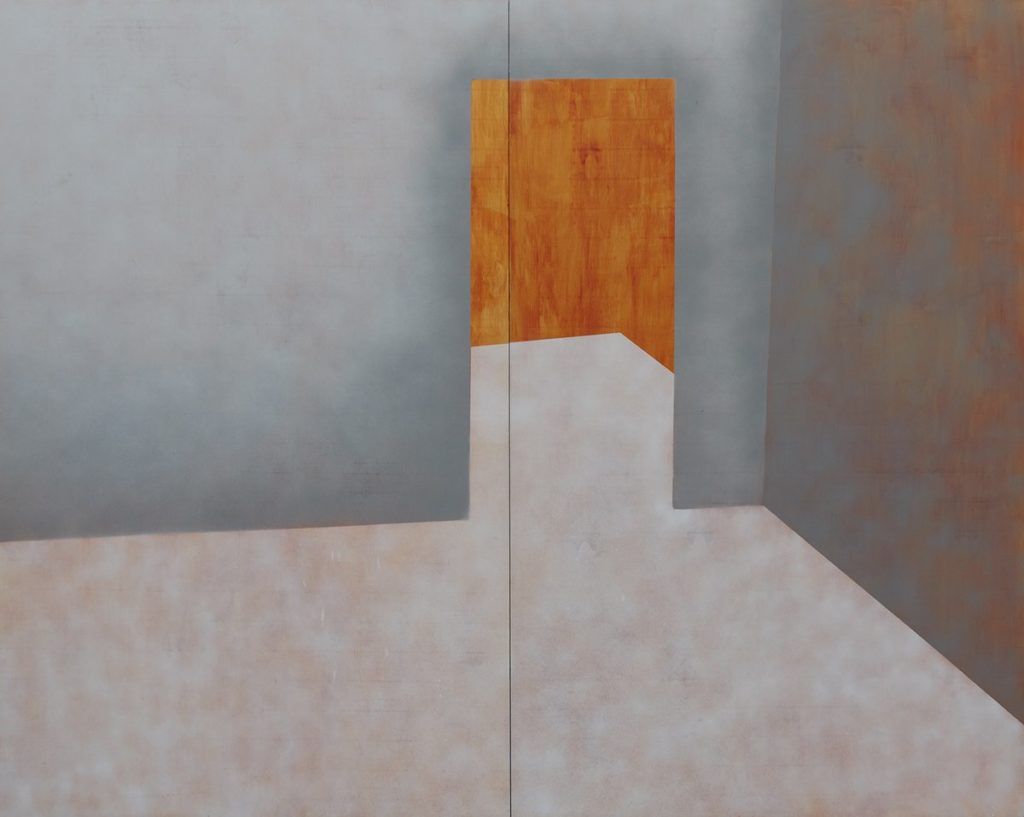Celia Scott: L’Attente

Space Stares Back
‘Space’ has come to mean much more than the OED definition, although even there, for such a small word, it has a surprising length, depth and breadth of meaning. It is space that Celia Scott is defining in her ultimately abstract work.
As a trained architect with a long practice behind her, Scott is acutely aware of the importance of space: actual, private and public, real and imagined, interior and exterior (L’Attente). Space informs her two-dimensional aesthetic and her recent paintings, notably the series entitled Space Stares Back. Her drawings, specifically the pastels, are often more literal than the paintings. They have a greater immediacy both of technique and of effect. Abstracted from these, the paintings are altogether cooler, emptier, more spare. Scott uses the industrial materials of early Modern architecture, such as ply, aluminium and spray paint along with processes of drawing, painting, spraying, and, surprisingly, sanding and carving with a router, to achieve her own language of forms.
They are, therefore, abstractions that lend themselves to an architectural interpretation: a way in, or a way out, a window or door, in junction with wall, floor and sometimes ceiling; and there are structures, a pole or column possibly. Scott is creating a third dimension out of the two-dimensional confines of her medium.

– Olivia Horsfall Turner